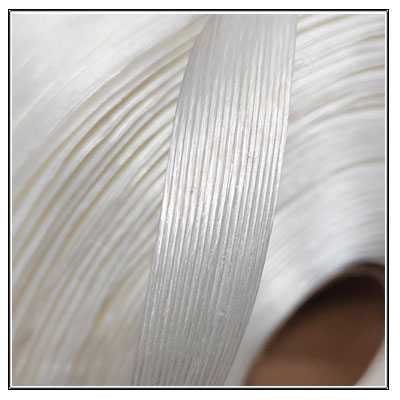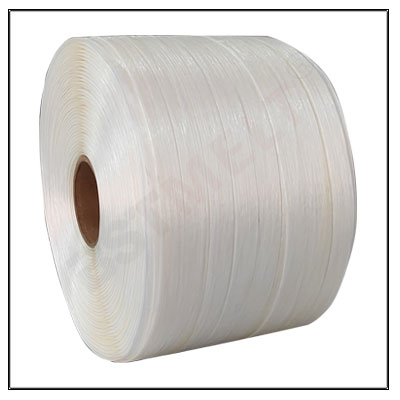Textile Hot melt Strapping: A Versatile and Reinforced Packaging Solution
In the world of industrial packaging, textile hotmelt strapping has emerged as a reliable and robust solution for securing goods across various sectors. Known for its high strength and durability, this strapping is made from continuous strands of reinforced materials such as polyester, making it an ideal alternative to traditional steel or plastic strapping. Its unique combination of flexibility, safety, and performance has led to its growing adoption in industries worldwide.


Production and Material Composition
Textile hotmelt strapping is produced by bonding continuous polyester yarns with a special hotmelt adhesive. This process ensures that the strap retains a compact and uniform structure, giving it exceptional tensile strength while remaining lightweight. The hotmelt coating reinforces the strap, preventing fraying or breaking under heavy loads and providing a smooth surface for handling.
Unlike steel strapping, which can be rigid and prone to rust, textile hotmelt strapping offers flexibility while maintaining comparable strength. It absorbs shocks and impacts effectively during transportation, making it an excellent choice for securing heavy or fragile loads. The reinforced polyester fibers also make it resistant to weather, moisture, and UV exposure, ensuring optimal performance in outdoor or challenging environments.
Key Advantages of Textile Hotmelt Strapping
One of the standout features of hotmelt strapping is its high strength-to-weight ratio. Despite being lightweight, it can secure heavy loads without stretching or breaking. This makes it ideal for bundling products such as steel pipes, timber, construction materials, or agricultural goods. Additionally, it is safer to use compared to steel strapping, as it lacks sharp edges that can injure workers or damage products.
Textile hotmelt strapping is also cost-effective and easy to handle. It can be applied manually using tensioning tools or combined with buckles to provide a non-slip grip. Unlike other types of strapping, it does not require specialized machines, reducing costs and increasing efficiency in industrial operations.
Applications Across Industries
The versatility of textile hotmelt strapping has made it indispensable across numerous industries. In logistics and transportation, it secures large cargo loads for shipping, preventing movement and minimizing the risk of damage. In construction, it is used to bundle heavy building materials like timber, pipes, and bricks. The agricultural sector benefits from its ability to safely bundle hay bales and produce, while manufacturers rely on its strength to secure machinery and other goods during transit.
Furthermore, textile hotmelt strapping is environmentally friendly. Made from polyester, it is fully recyclable, aligning with the growing emphasis on sustainability in industrial packaging. Its lightweight design also reduces the overall weight of shipments, contributing to lower fuel consumption and reduced carbon emissions.

Conclusion
Textile hotmelt strapping is revolutionizing the way industries secure and transport goods. Its combination of high strength, flexibility, and cost-effectiveness makes it a preferred alternative to traditional strapping solutions. Whether in construction, logistics, or agriculture, textile hotmelt strapping ensures the safe and efficient bundling of products, all while meeting sustainability standards. As industries continue to seek reliable and eco-friendly packaging solutions, textile hotmelt strapping is set to play a critical role in the future of industrial packaging.